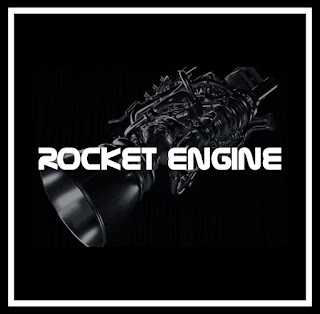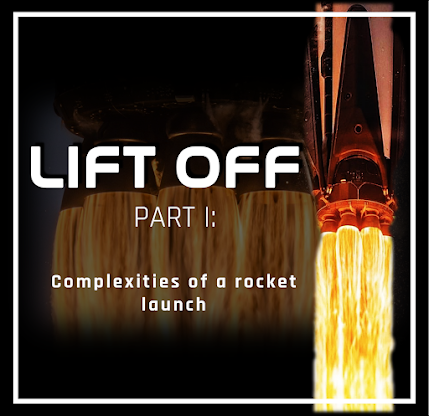ROCKET ENGINE: HEART OF THE ROCKET (Part 3)
THE HEART OF THE ROCKET - PART 3
The most complex piece of engineering.
This is the finale of the Rocket Engine Series. This part covers topics like throttling, chugging, buzzing, propellant combination and give a brief idea about turbopumps. Turbopumps will be discussed in brief in future. I care about your precious time and try to explain major topics while keeping them short as well. So let's begin.
THROTTLING:
The basic meaning of thermal throttling is to save our devices or appliances from booming. This can be explained via a simple example that every single person can relate to. When you are busy playing games on your phone for hours and hours, the phone gets heated up. Since the processor inside your phone has to continuously operate on high frequency to provide you non-stop dazzling experience, it doesn't get enough time to cool itself and thus, your phone starts to lag. This might be annoying sometimes, but you would prefer lagging rather than your phone immediately shutting down or blasting off in your hands. Lagging occurs because the processor turns down its frequency and therefore attracts some cool air. A similar concept is applied in rocketry terms.
For Rockets, the throttling process is the process in which the flow of fluid is partially restricted by a valve into the turbopumps that causes a high-pressure drop in the fluid. This means that when a rocket engine is at its heat peak, the valves (gates) can limit the flow of the incoming propellent so that the turbines can release their stress by reducing the work-load and therefore it provides some extra time for releasing heat. This is a very efficient method to control the output thrust of the rocket that needs to be varied according to the gravitational pull. And that's how this dangerous-looking term benefits the engine.
 |
| Throttling valve |
CHUGGING and BUZZING:
CHUGGING:
The variation in the acceleration of the vehicle causes differences in pressure in the feed lines (the pipes that carry fuel) causes low frequency (few Hertz) oscillations in the chamber pressure. It is normally attributed to an interaction between the combustion process and the propellant feed system and excludes interaction with the primary structure. This usually causes cyclic variation in thrust, its effects can be devastating. It is usually not destructive by itself, but can result in a significant reduction in performance, and can trigger other types of instability. It can indirectly destroy the payload/ vehicle. This effect can be reduced by introducing gas-filled damping tubes in the way of high-density propellants.
BUZZING:
Buzzing is an anomaly that causes moderate frequency instability that is normally attributed to the interaction between the process inside the combustion chamber and the injector stage. (View Injectors) In other terms, it can be caused due to insufficient pressure drop across the injector. It can cause the triggering of higher frequency instabilities but is not normally destructive itself. Though it is quite annoying. Screeching (sometimes called screaming or squealing) is a high-frequency instability that results from the interaction between the combustion process and the acoustic properties of the combustion chamber. Screeching can result in rapid destruction of the engine.
PROPELLANT COMBINATION:
It's a broad topic for a chemical engineer to do research. Not an easy process though we'll figure it out. So a rocket flies on two tanks. A fuel tank and an oxidizer tank. The oxidizer is a provider of oxygen for the fuel to burn. Since we have talked about propellant (here) so we'll dive deeper. So there are specific factors on which propellant combinations are made. To name a few here are a few pointers.
- Every fuel and oxidizer are selected so that their molecular weight is less. Remember we don't need 10-20 litres. We need hundreds of tons of fuel. So lesser the weight, the more the fuel you can carry.
- The combination of two shall have a good Specific Impulse value.
- The combination of the two must not produce any toxic products and shall produce low molecular weight products like (CO2, CO, N2)
- The reaction must be slow and steady and not explosive.
- It should be stable over a wide range of temperatures.
- Hypergolic fuels must be avoided. (Highly toxic and dangerous. Can cause death.)
- It should be non-corrosive or else the tanks get rusty and explode due to internal pressure.
- The combination must produce enough thrust to lift the rocket.
TURBOPUMPS:
Aha! Here's another great topic to write about.
Unlike traditional water pumps that are used to transfer water, this pump is more of a speed enhancer. This pump marks the beginning of the rocket engine. The pipes from the fuel tanks enter the turbpump and then it increases the velocity of the gas at a tremendous rate and thus the high speed exhaust is generated. The velocity of the gas is highly dependant on how fast the turbopump boosts the fuel. My next article will be solely based on turbopumps. So stay tuned to check that out. It will be posted next week.
------------------------
With this, we arrive at the end of the three-part series on Rocket Engine. I hope you liked it. Thank you for reading. Follow for regular content and comment with your juicy, knowledge-filled doubts in the comment. See ya, B-bye.





I want to learn turbopumps in detail...
ReplyDelete